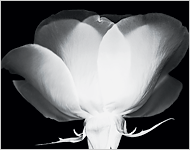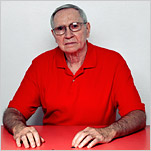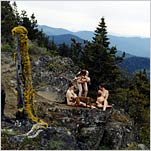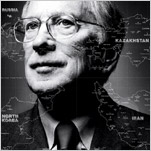In 1984, Antonia Bellanca, a florist in East Hampton, N.Y., decided to create a freesia perfume. She told her perfumer, Bernard Chant, that she wanted freesia because she’d noticed that of all her flowers, freesia “knocked your socks off, like trumpets in an orchestra; everyone else sings backup, even the lilies.” Chant delivered a perfume that fully realized freesia’s qualities — its intensely green top note and its stratospheric quality, like jasmine at 48,000 feet, swimming in pure ozone. She named the perfume Antonia’s Flowers, and it became a cult favorite, although there is one thing that is startling about it: it contains no freesia. In fact, there’s no freesia in any perfume in the world. Not only that, but any number of the perfumes you love — perfumes that smell of your favorite flowers — contain not a trace of their signature bud.

The reason for this is simple: extraction technology. Some flowers extract beautifully. Put a few tons of roses into a solvent, and you get a gorgeous absolute, $1,000 to $5,000 a pound for the pure, thick, 100-percent essence that you smell in a rose-violet fragrance like Yves Saint Laurent’s Paris. You’ll find real jasmine extract in Abercrombie & Fitch perfume; real broom in Boucheron; neroli in Guerlain’s Eau Impériale; and natural tuberose in Amouage Gold and Dior’s Poison. Lauren Ralph Lauren has real marigold, and there are distillations of osmanthus, immortelles and ylang-ylang. And that’s pretty much it. Almost no other pure flower distillations exist, because technology is simply unable to extract scent from them. Exactly why is a mystery. Put a few tons of violet flower into a solvent, and you extract ... a limp material that smells nothing like violet. “Theoretically, distilling violet is possible,” an industry figure told me, “but in reality the yield is always so vanishingly small it’s financially impossible. A pure violet flower absolute would be much more than $10,000 a kilo, if you could make it work.” The violet implacably refuses to surrender its smell.
And so perfumers recreate it: mix 2,6-nonadienal + beta-ionone + dihydro-beta-ionone + alpha-ionone and a few others, and there’s your scent of violet. Which means the rose-violet of YSL Paris is made with natural rose — and recreated violet. This conjured violet is also integral to Givenchy’s gorgeous L’Interdit and Lancôme’s estimable Magie. Mimosa in perfumes is mostly imaginary. They put flower, leaves and stem into a solvent, but the material that results isn’t the smell of the flower at all; Givenchy’s Amarige is a mimosa perfume, but what you’re smelling is actually the scent of mimosa leaf and twig (which, incidentally, smells lovely). The same goes for lavender, jonquil and narcissus. (“The flower’s contribution to the scent material is close to zero,” a perfumer told me of narcissus.) Geranium? They don’t even bother to put the flower in the distiller; only the leaf is extracted. They recreate hyacinth for Estée Lauder’s White Linen because no hyacinth exists in natural form in perfumes, nor any lilac, lily, honeysuckle, peony or wisteria. Perhaps the most famous imaginary flower is lily of the valley. No technology has ever been able to pull its fresh carnal scent from the delicate flesh of its petals. The 1956 Diorissimo is the paradigmatic “lily of the valley perfume,” its lily of the valley made of molecules like hydroxycitronellal, geraniol and phenyl ethyl alcohol.
Next fall, Bulgari will come out with Omnia Améthyste, a perfume that smells of iris. While iris root has a strong, beautiful, astonishing — and astonishingly expensive — scent, iris flowers have almost no smell at all. “Maybe a little honeyish smell, a little vanillic, depending on the hybrid,” says Alberto Morillas, the perfumer who created the scent for Bulgari. So Morillas reconstituted the flower’s pale scent with his idea of what iris smells like: he put in woody scents, iris root absolute for elegance, Bulgarian rose and orange blossom for honey and sun. He used Habanolide, a woody synthetic molecule, for the warmth and sensuality of human skin, and the synthetic Muscenone for a delicate, shimmering, powdery feel. Just as an author writes a novel based on a true story, Morillas has taken a true but slight scent and created a great piece of olfactory fiction.
And there is a degree of imagination that actually goes even beyond this. Eight years ago, the designer Karl Lagerfeld asked Jacques Polge, Chanel’s elegant, talented perfumer, to make a perfume out of Coco’s favorite flower, the camellia, which has no smell. The limpid and lovely result is Une Fleur de Chanel, a product of pure imagination. This is not distillation, obviously; it is almost a kind of abstract expressionism for the nose.
My favorite example of a ghost comes via Odile Lobadowsky, the president of Kenzo Parfums. In 1999, she got a copy of the famous photograph of a girl holding up a single flower to a bayonet taken by the French photographer Marc Riboud during a 1967 antiwar protest outside the Pentagon. Lobadowsky wanted to create what she thought of as “a flower stronger than a gun.” Since Kenzo loved poppies, she and creative director Patrick Guedj envisioned that flower as a red poppy, a flower that — you guessed it — has no scent. Guedj sent out a description of the concept to various perfumers, including Alberto Morillas, one of a handful of star perfumers highly in demand. Morillas showed Kenzo three perfume trials that he’d been working on; everyone liked the one that Morillas had, by chance, dubbed Pourpre, or purple. To create it, he used a natural violet leaf, essence of acacia flower, linalyl acetate, geraniol and citronellol (molecules found in jasmine and rose). To make it smell “red,” he mixed pure and synthetic vanillas, a warm molecule called heliotropin and the kerosene-vaporlike scent of benzyl acetate. Flower by Kenzo was introduced in 2000. It is mesmerizing as a whisper, a huge commercial success and entirely imagined from a flower with no scent.













